Tool/software:
Hi,
We have occur MIC fail issue.

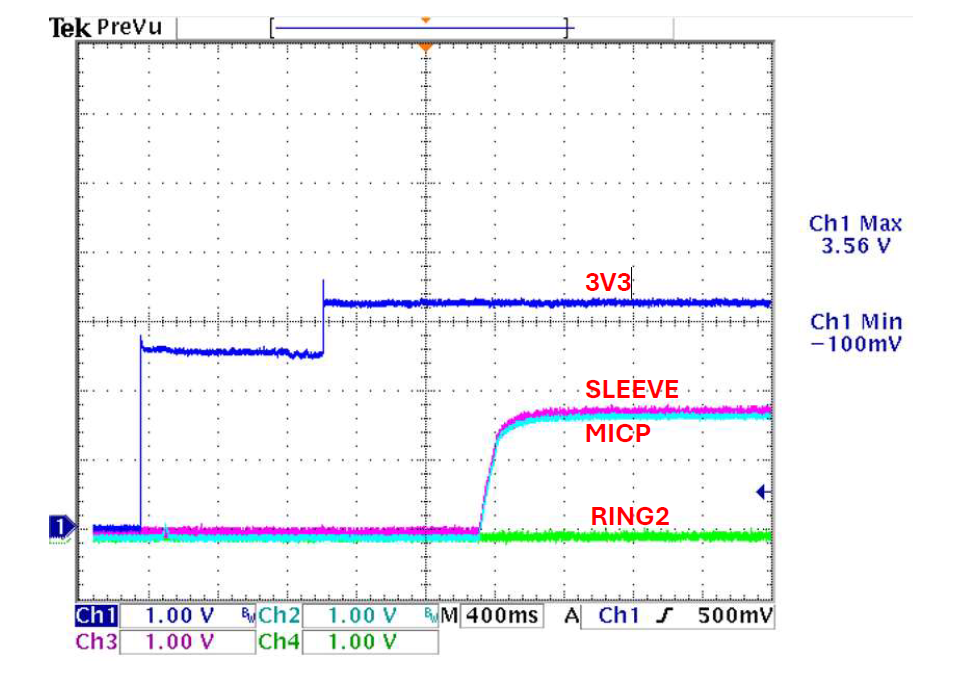
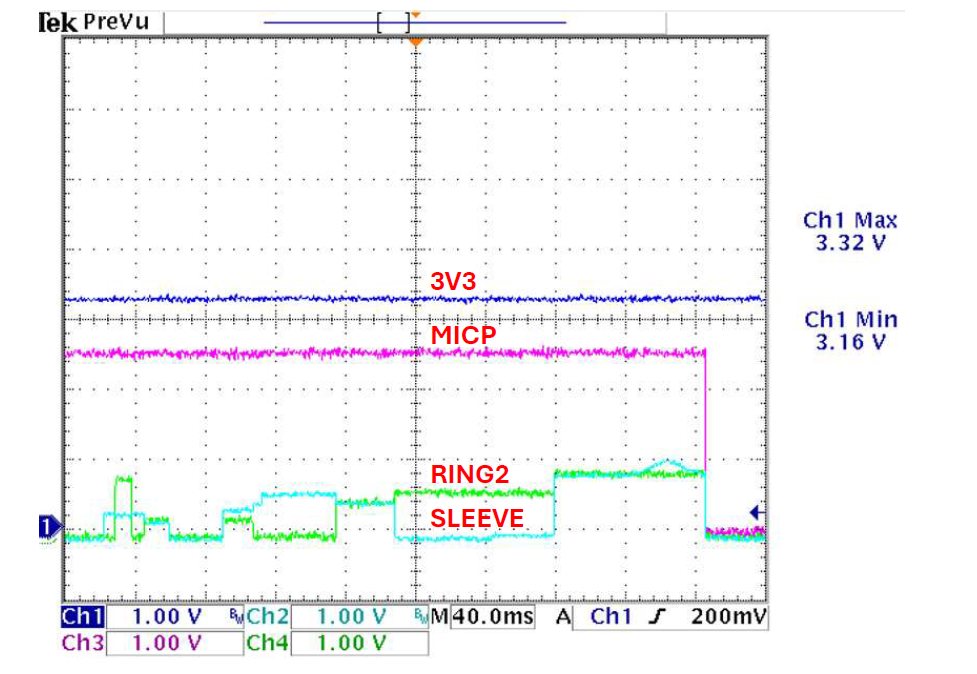
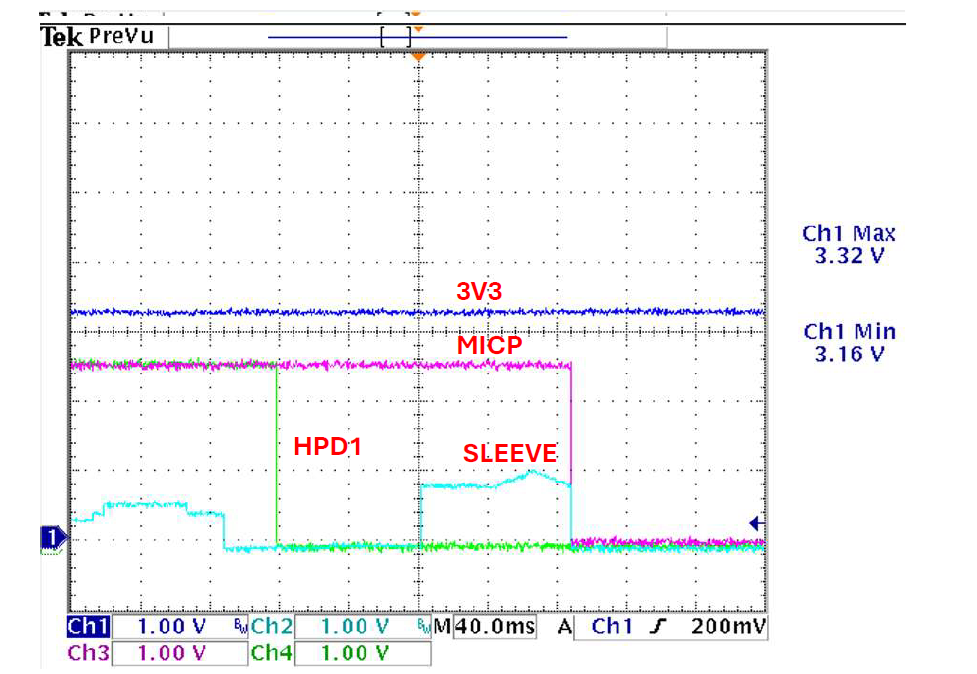
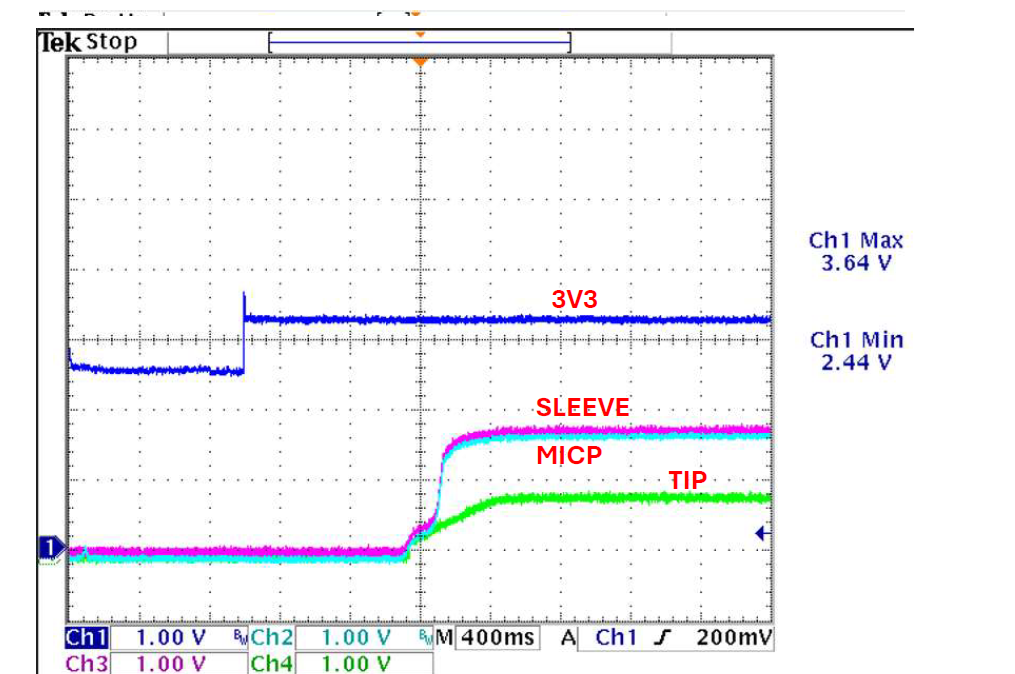
This thread has been locked.
If you have a related question, please click the "Ask a related question" button in the top right corner. The newly created question will be automatically linked to this question.
Tool/software:
Hi,
We have occur MIC fail issue.





Hello Jeff,
It seems when the 4-pole headphone is plugged in first there are no issues.
What does the M stand for in the scope captures? I noticed in the cases where there were no issues it is 400ms and the one with the issues is 40ms.
For the TS3A227E after a detection event has been triggered either through software or physical stimulus (like insertion of accessory) the IC will implement a delay period that defaults to 90ms. After 90ms the detection algorithm is triggered.
What my theory is if I am understanding the scope shots correctly 40ms is not enough for it to detect the mic and it fails.
Thanks,
Nir
Hi Nir,
M(40.0ms) is mean one time scale is 40ms.
You mean what pin to DET_TRIGGER need > 90ms? MIC_PRESENT?
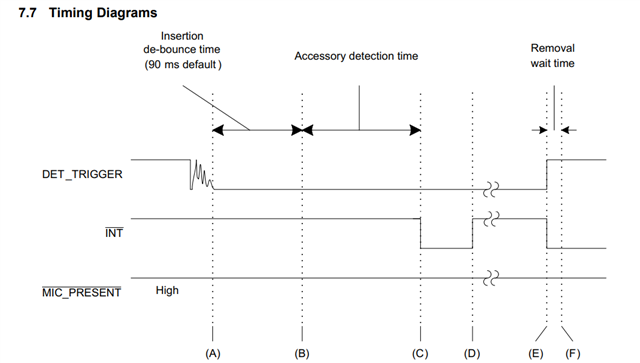
Thanks!
Jeff
Hello Jeff,
After a detection event has been triggered either through software or physical stimulus (like insertion of accessory) the TS3A227E will implement a delay period that defaults to 90ms.
Point B is the end of the insertion de-bounce time and the beginning of accessory detection
DET_TRIGGER is insertion detection (point A), after 90ms MIC_PRESENT will detect if there is a MIC (point B).
For more information please see FAQ.
Thanks,
Nir
Hi Nir,
But in figure 3, HPD1 to MICP(DET_TRIGGER to MIC_PRESENT) > 160ms, should be over 90ms requiremnt.
Do you have idea why still fail?
And other question, SLEEVE ~0.9V is normal? What is the correct voltage level on SLEEVE?
Thanks!
Jeff
Hello Jeff,
I see, the deafult delay is 90ms, but it could be changed to be higher. I am assuming this is not the case here, so I don't think it is the issue.
Can you please confirm if you are using OMTP or standard 4-Pole Accessory? If standard then the MIC is on the sleeve connection, which seems to be glitching according to the provided captures.
This can be caused by AC interference, coming from the UFP being plugged in first, or parasitics from unplugging and plugging back in the 4-pole headphone. I suggest having a 100pF capacitor to ground on the line to block out the AC.
Please let me know if that works.
Thanks,
Nir
Hi Nir,
We have tried add 100pF on SLEEVE to GND but still fail.
We have compare the waveform from this fail project(figure1) and good normal project(figure2) seems MICP is different.
May I know it may impact TS3A227E detection? thanks!
figure 1
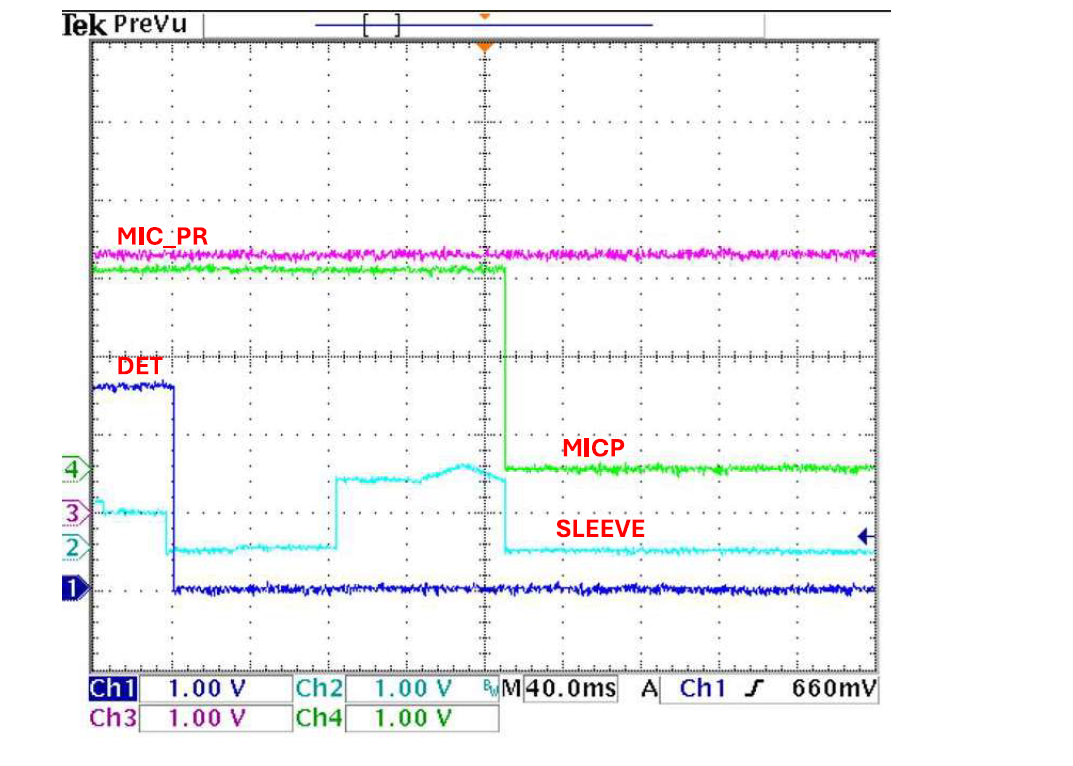
figure 2
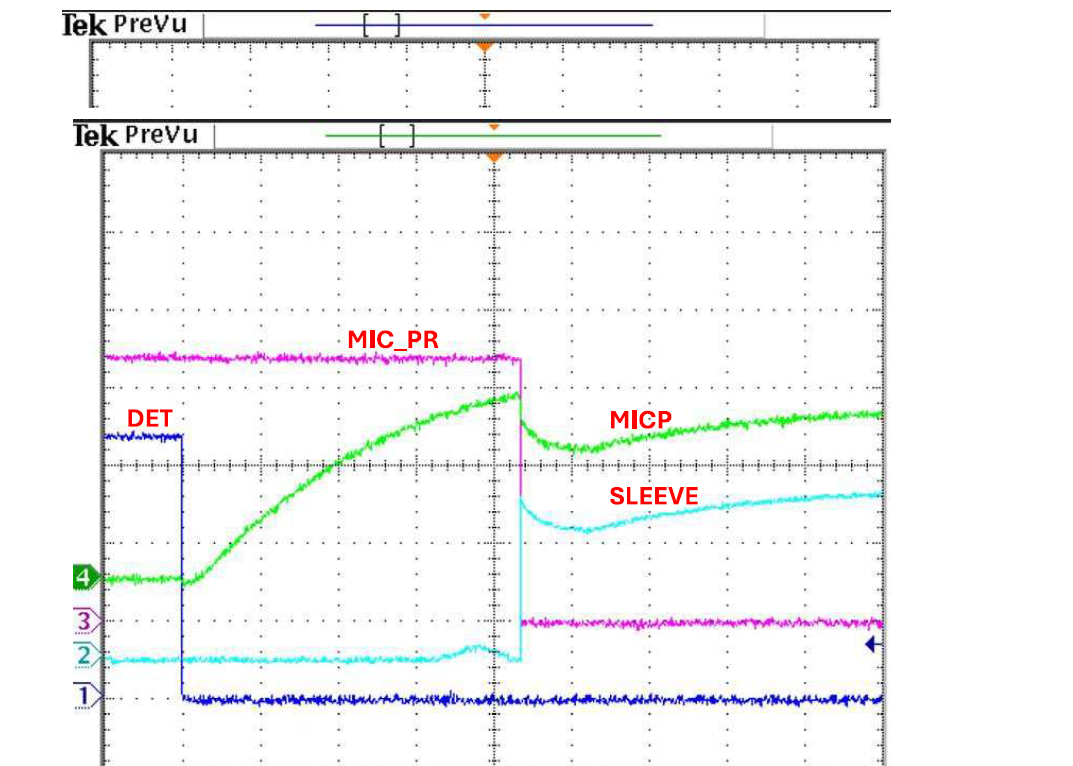
Jeff
Hello Jeff,
Ok, since OMTP and standard are having issues, then it is not related to the sleeve. The microphone is either on the sleeve or ring2.
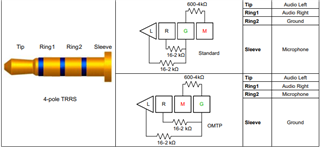
The RC load could be the cause, try to change it to the datasheet values and let me know if it works.
Thanks,
Nir
Hi Nir,
What means RC load, would you please provide the detail? In datasheet what page and should be modify on which pin?
Thanks!
Jeff
Hello Jeff,
I meant the capacitor and resistor values should be changed to 1uF and 2.2k ohms in your design to match what is in the datasheet, as you suggested to see if it solves the issue.
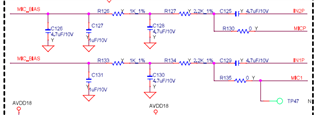
Thanks,
Nir
Hi Nir,
We have tried modified same as datasheet setting but still not work?
May I know the MICP mic bias power should be low or high in when the DET_TRIGGER pull low trigger the detection event?
only we found the fail and good unit major different is this pin status. Thanks!
Fail:
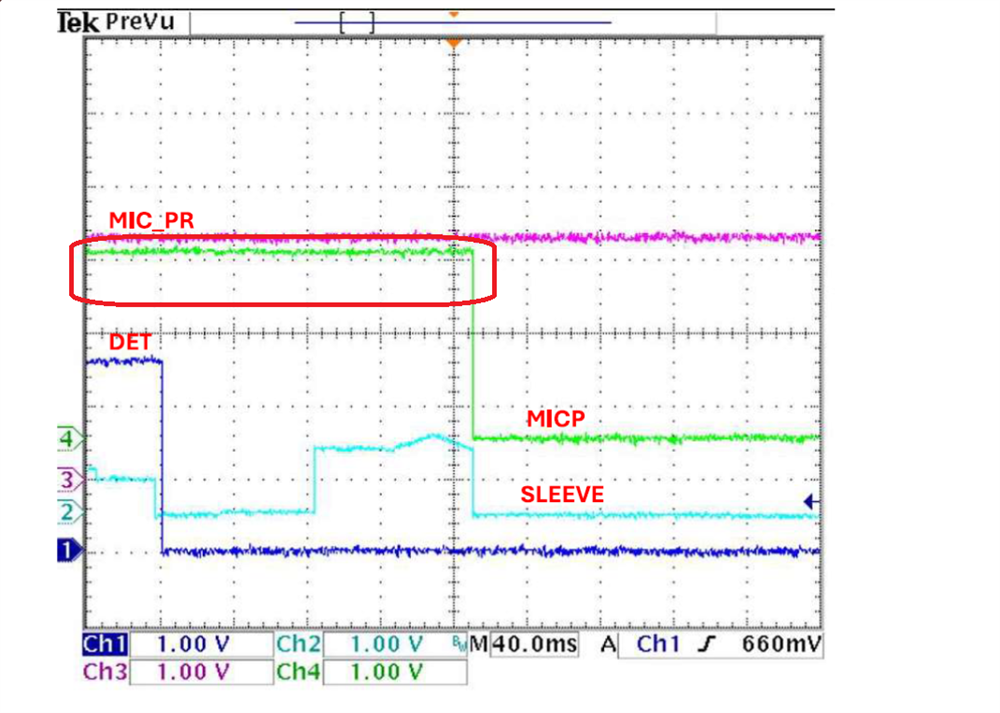
Good:
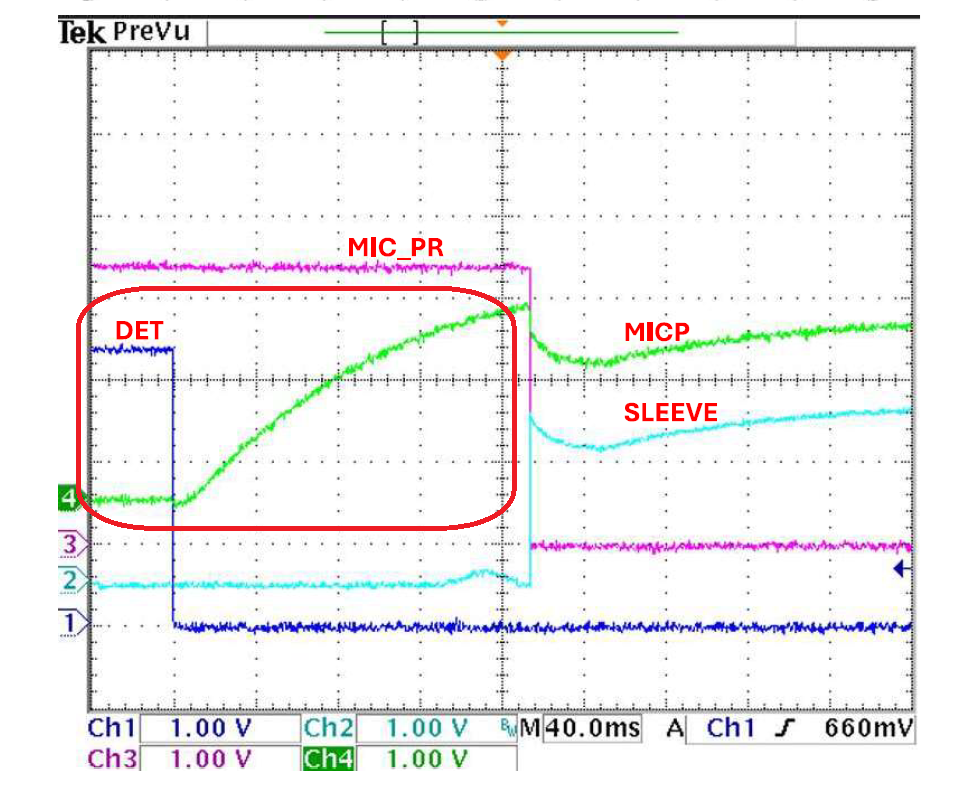
Thanks!
Jeff
Hello Jeff,
MIC_PRESENT should pulled low and MICP needs to be pulled high.

Thanks,
Nir